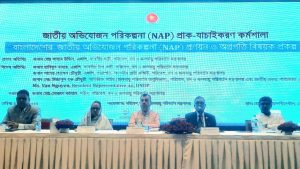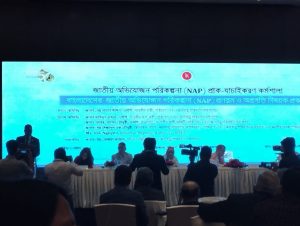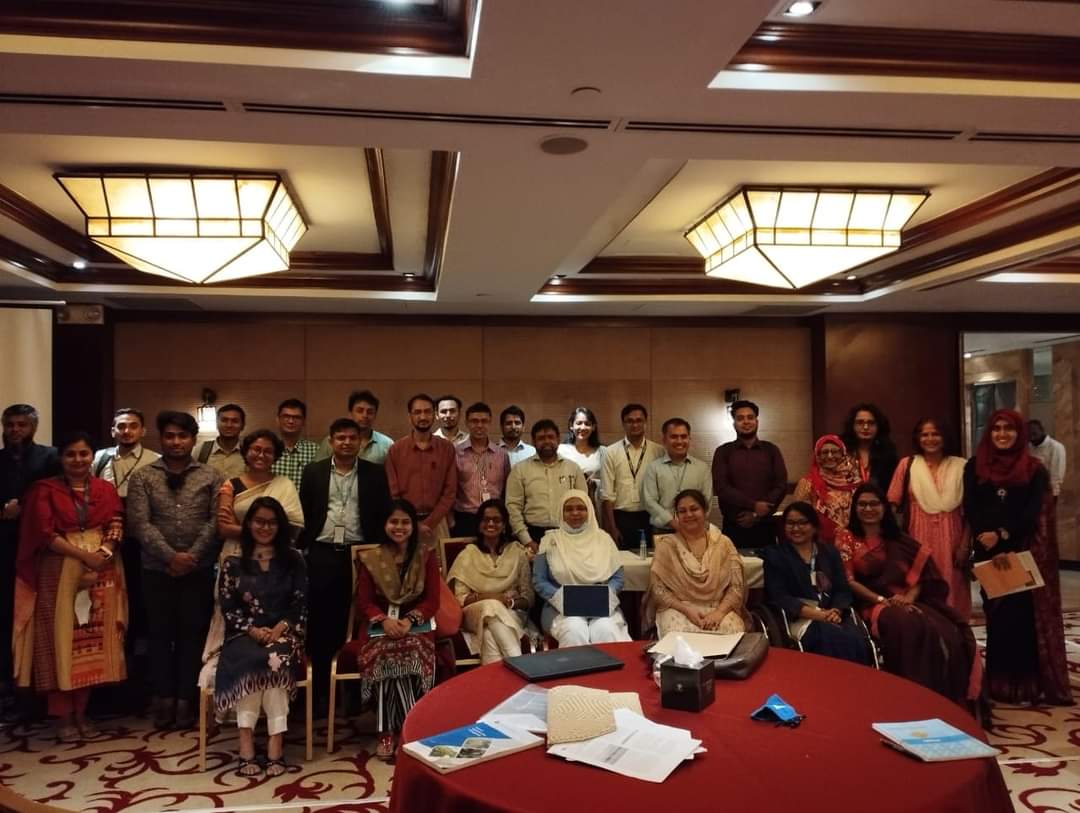A one-click technology opportunity for climate change adaptation
The fight against climate change means reducing greenhouse gases. But it also necessarily entails adaptation to the climate change impacts on the environment and livelihood, especially for the most exposed and vulnerable people to climate change.
Mitigation and adaptation efforts in developing countries can only be achieved utilising capacity building, coupled with technology transfer. Indeed, technology is an inseparable part of today’s world and is continuously changing our ways of living and pushing back limits of what we thought was possible.
Technology development and innovation is part of the drivers of countries development and economy. It is, therefore, logical to see technology as a provider of ‘creative solutions’ to some of our current challenges such as climate change.
As such the Paris Agreement in article 10 paragraph 4 does recognise the potential of new technologies to improve adaptation capacities and limiting greenhouse gases emissions by establishing a technology framework for the Technology Mechanism established at the COP 16. The United Nation Framework Convention for Climate Change also created a state-to-state obligation to assist and provide technological and financial support for climate mitigation and adaptation, especially for the developing and most vulnerable countries.
Adaptation tech needs to serve the local market
One of the first climate change technologies were renewable energies, at the forefront of this change were solar products. They represented an enormous opportunity to cut back greenhouse gas emissions and therefore comply with the mitigation obligations decided by a given country. At first, the adaptation pillar of the climate change fight received less attention and therefore less financial support and attention for developing climate adaptation technology.
Indeed, adaptation is a complex question consisting of a variety of causes of community’s vulnerabilities and situations, shifting migration pattern, etc – making it more difficult to assess the technological need of a country. However, in recent years, a stronger focus on the question of adaptation at the international level of climate change negotiations put the question of adaptation technologies on the table.
Adaptation technologies designated particular technical solution to a climate risk (building sea walls, drought-resistant crops, use of the natural capital of a given communities in a more resilient way), as well as other technologies such as digital information and communication to improve access to information and knowledge of climate conditions (short and medium weather forecast to inform farmers when to plant their crops).
The technology transfer can have two forms: first the technology transfer of a given technology developed by a research institute for the private sector for commercial use within a given country, and the second (indented by the climate change negotiation) the flow of a given technology and associate knowledge from one country to another and adopted by the private sector and the population in the receiving country.
However, a number of barriers still exist for an international technology transfer despite the numbers of measure taken to facilitate and finance the technology transfer from developed countries to the developing ones (exception of patent protection price control, etc.). The currently existing barriers, defined as any limitation that diminish the effect and use of a technology, can be divided in three categories: technical (need for a high level technical knowledge), organizational/economic (different perception of the use of a technology between the provider and end users), and system barriers (lack of infrastructure).
Therefore, the real underlying question for any technological transfer need to be addressed first; such as the assessment of the needs of a particularly vulnerable community and secondly their capacity to use a given technology. In other terms, it is about understanding the market and who the users are of a given adaptation technology.
Local solutions – making use of tech that already exist
The International Conference on Climate Knowledge ‘Gobeshona’, 2019 addressed such issues by bridging gaps in the rural areas through the use of technology, as the means of adaptation and also as an integral part of capacity building. At the conference, national and international participants discussed their research work based solutions demonstrating the technology capacity already existed within Bangladesh.
PROTIC (Participatory Research and Ownership with Technology Information and Change), one of the interesting project shared, is in collaboration of OXFAM and Monash University, Australia. The project is in the implementation stage (2017-2019) and it focuses on empowerment of rural communities, specifically women by providing them technological tools to raise awareness, increase interactive community information services and then fulfil the needs of the communities.
Beginning with the access of mobile phones in remote areas, which includes only ‘one click’ to learn about the weather conditions, get disaster alerts, agriculture and crop information. Above all, it provides knowledge and information as a part of educating the communities at large. The usage of mobile phones is becoming an integral part of people lives, such as climate change and its impact has developed, sadly, is also a part of their daily life now. The innovative technological projects help in engaging village communities to be part of the participatory action research and connecting them to the cities and developments actions. The widespread use of technology and more importantly making it accessible to vulnerable communities will only provide fruitful benefit regarding fostering human capacity and becoming more adaptive to climate change impacts.
One of the key recommendations proposed at the conference is, to focus on improving the existing mechanism of technology that we have currently, rather than finding new solutions. The use of mobile phones could be explored and it does not require significant investment. The technologies could be useful with the opportunities of knowledge sharing and establishing a link with local communities, understanding of the basic requirements, to upgrade traditional knowledge and identify gaps to intervene.
At the same time, exploring more on how local technologies could be improved and developed without relying much on outside help and on the other side, making sure that the technologies reach the most vulnerable people, as it should be easily accessible and affordable.
Furthermore, in developing countries there are already some technologies that are widely available and used by the population and therefore don’t need to rely on the international technology transfer and its barriers, and thus can be used for climate change adaptation project such as mobile phones. Moreover, in this essence, adaptation technologies need to be developed with a community-based approach and with technologies that are already used, innovative methods need to be explored and used in finding solutions to climate change impacts.





